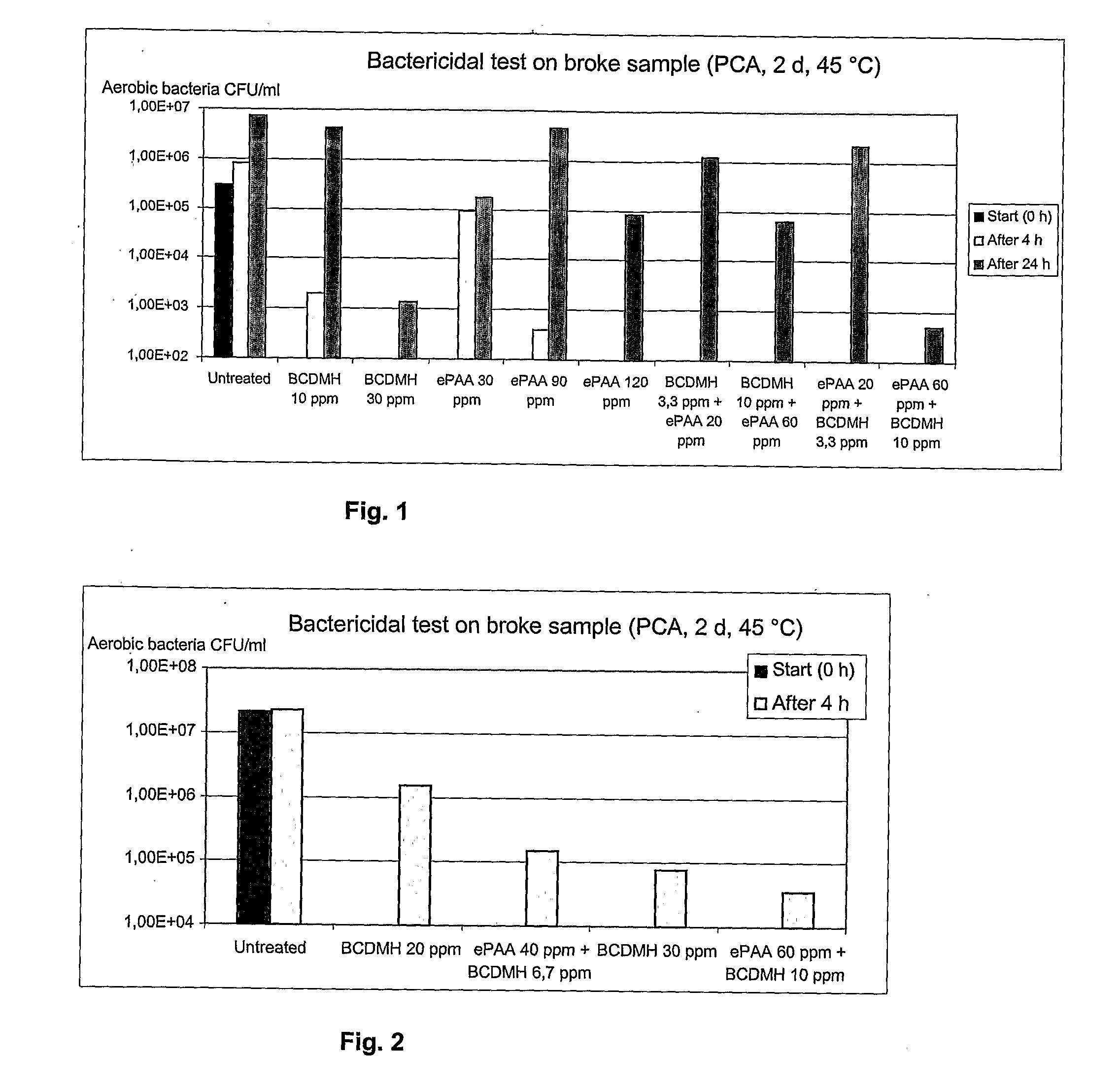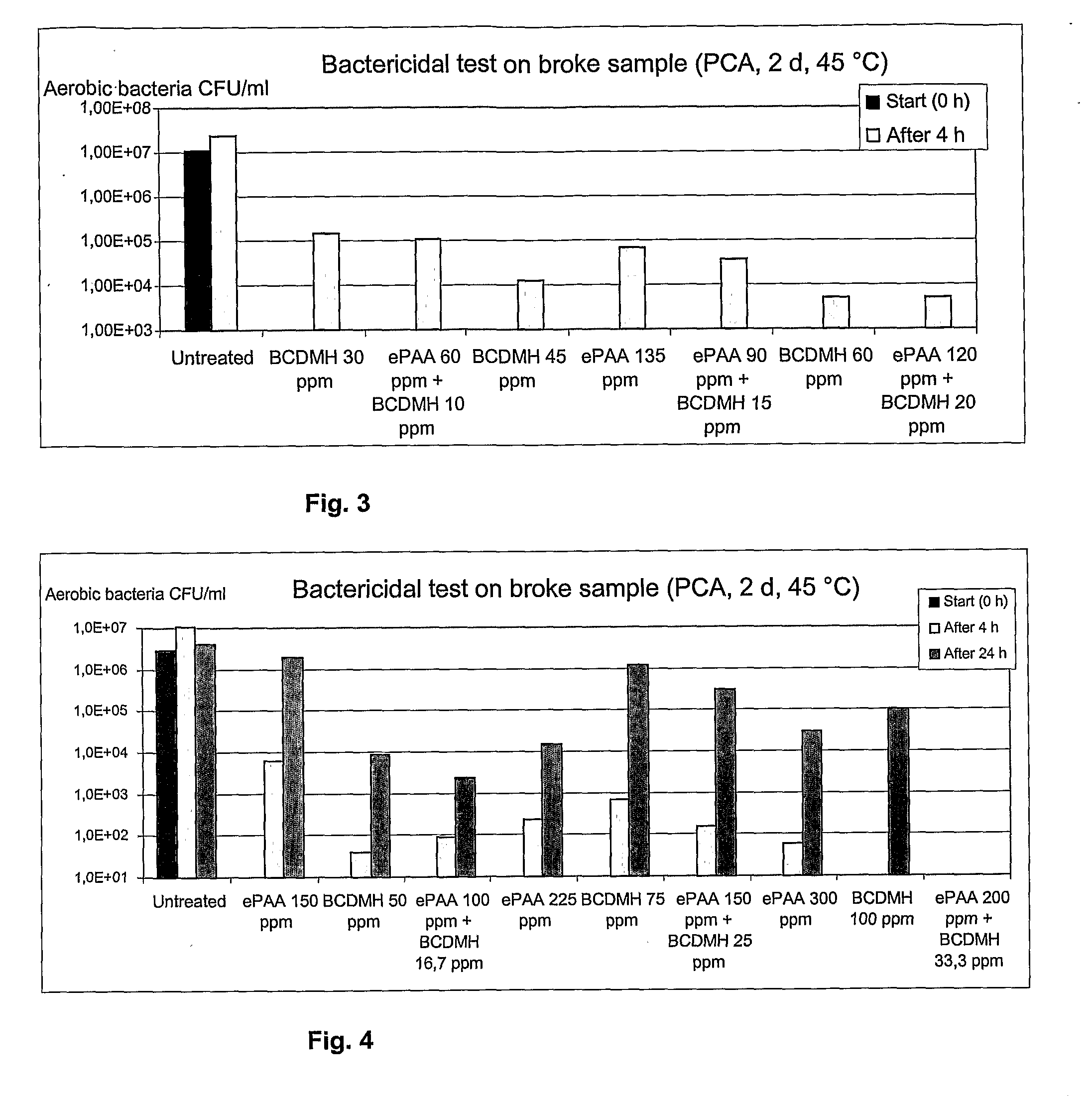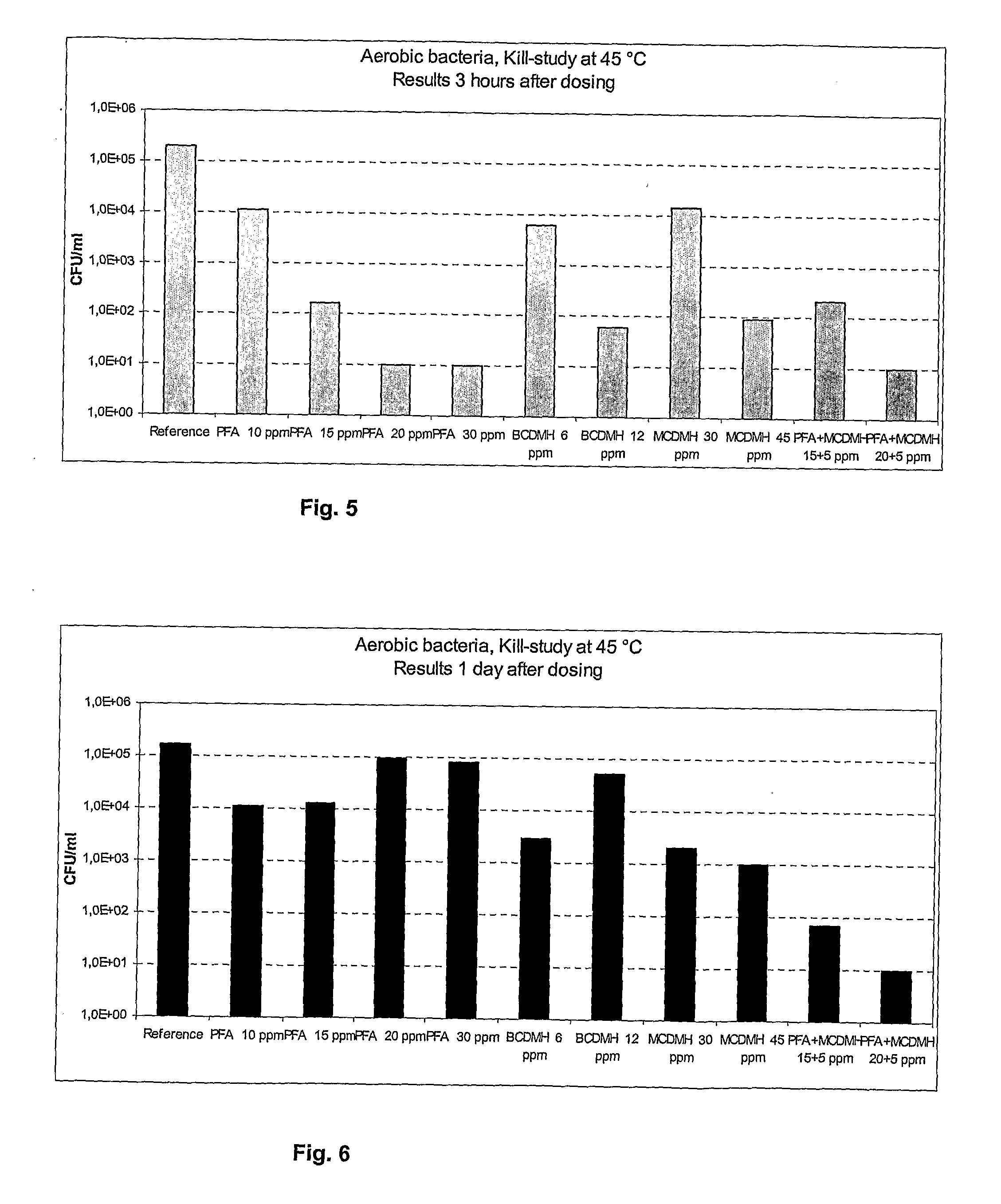Method for Preventing Growth of Microorganisms, and a Combination for the Prevention of Microbial Growth
- Summary
- Abstract
- Description
- Claims
- Application Information
AI Technical Summary
Benefits of technology
Problems solved by technology
Method used
Image
Examples
example 1
[0039]Dilute broke of a board machine (pH 7.8, oxidation reduction potential (ORP) 40 mV) was divided into 10 separate jars, and biocides to be tested were dosed. Concentrations are expressed in ppm (mg / l) of the commercially available product. In tests where two different agents were dosed into a single jar, the jar was closed after the first pipetting, the broke sample was vigorously agitated, followed by the addition of the second agent during 5 to 10 minutes. Jars were incubated under conditions corresponding to those in the broke system (45° C., mixing), and thereafter, viable aerobic bacterial counts were determined by cultivation after exposure periods of 4 and 24 hours.
[0040]In this bactericidal test on broke, killing efficacy of BCDMH and ePAA used alone and in combinations were compared, two thirds of BCDMH being replaced in the combinations with peracetic acid used in threefold amounts. For instance BCDMH 10 ppm versus ePAA 30 ppm versus BCDMH 3.3 ppm+ePAA 20 ppm.
[0041]Th...
example 2
[0046]A sample (pH 7.9, ORP 145 mV) from a broke pulper of another board machine was divided in jars, followed by similar testing as described above.
[0047]In this bactericidal test on broke, killing efficacy of BCDMH, and combinations of ePPA+BCDMH were compared, two thirds of BCDMH being replaced in the combinations with peracetic acid used in threefold amounts.
[0048]The results are presented in FIG. 2.
[0049]Comparison of killing efficacy after 4 hours of exposure showed that a combination with 40 ppm of ePAA and 6.7 ppm of BCDMH was clearly more efficient than 20 ppm of BCDMH alone. Similarly, a combination with 60 ppm of ePAA and 6.7 ppm of BCDMH was more efficient than 30 ppm of BCDMH alone. The results suggest that improved results both with respect to killing efficacy and cost efficiency are obtained by using said combinations.
example 3
[0050]Dilute broke of a board machine (pH 7.5, ORP 130 mV) was divided into jars, followed by similar testing as described above.
[0051]In this bactericidal test on broke, killing efficacy of BCDMH and ePPA used either alone or in combinations were compared, two thirds of BCDMH being replaced in the combinations with peracetic acid used in threefold amounts.
[0052]The results are presented in FIG. 3.
[0053]Comparison of killing efficacy after a contact time of 4 hours showed that combinations of ePAA+BCDMH gave identical killing efficacy as BCDMH alone.
[0054]The results suggest that the use of said combination yields the best cost efficiency since peracetic acid is a considerably less expensive chemical than BCDMH.
PUM
| Property | Measurement | Unit |
|---|---|---|
| Time | aaaaa | aaaaa |
| Density | aaaaa | aaaaa |
| Density | aaaaa | aaaaa |
Abstract
Description
Claims
Application Information
 Login to View More
Login to View More - R&D
- Intellectual Property
- Life Sciences
- Materials
- Tech Scout
- Unparalleled Data Quality
- Higher Quality Content
- 60% Fewer Hallucinations
Browse by: Latest US Patents, China's latest patents, Technical Efficacy Thesaurus, Application Domain, Technology Topic, Popular Technical Reports.
© 2025 PatSnap. All rights reserved.Legal|Privacy policy|Modern Slavery Act Transparency Statement|Sitemap|About US| Contact US: help@patsnap.com



